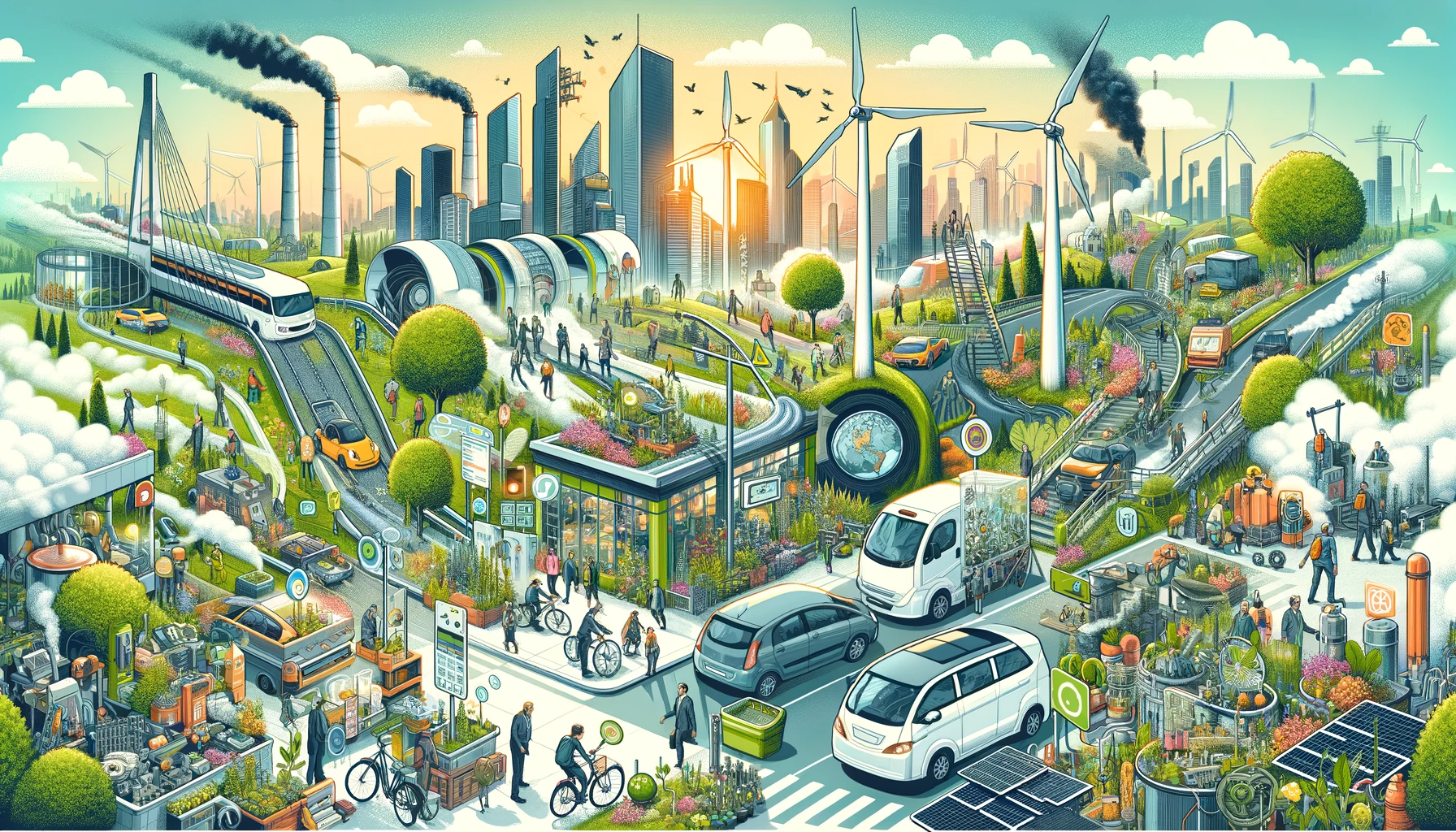Carbon emissions, the main driver of climate change, impact global temperatures, sea levels, and weather patterns. Tackling this crisis requires collective efforts on various fronts. Here’s an overview of steps towards a cleaner atmosphere.
1. Embrace Renewable Energy
- Solar and Wind Power: Non-polluting and increasingly affordable, these are primary contenders in reducing greenhouse gas (GHG) emissions1.
- Hydroelectric and Geothermal: Both provide consistent energy and significantly lower emissions compared to fossil fuels.
2. Enhance Energy Efficiency
- Building Insulation: Proper insulation reduces heating and cooling needs, conserving energy2.
- Energy-Efficient Appliances: Consuming less electricity reduces the carbon footprint of power plants.
3. Promote Public and Clean Transportation
- Public Transport: Efficient bus and train systems decrease the number of individual vehicles on roads3.
- Electric Vehicles (EVs): With an increasing green grid, EVs represent a cleaner alternative to fossil fuel-based vehicles.
4. Support Reforestation and Afforestation
- Trees absorb CO2, making afforestation and reforestation critical in offsetting emissions4.
5. Foster Sustainable Agriculture
- Organic Farming: Emphasizes natural inputs, avoiding synthetic fertilizers that contribute to GHG emissions.
- Reduced Meat Consumption: Livestock farming is a major carbon emitter; reducing meat consumption can lower emissions5.
6. Encourage Carbon Capture and Storage (CCS)
- Innovative technologies capture CO2 at emission sources, storing it underground or using it constructively6.
7. Advocate for Policy Changes
- Governments can enforce emission limits, fund renewable energy research, and offer incentives for green practices7.
8. Raise Awareness and Educate
- Knowledge empowers individuals to make eco-friendly choices, from supporting sustainable brands to conserving energy.
9. Reduce, Reuse, Recycle
- Efficient waste management, especially reducing single-use plastics, can substantially reduce carbon footprints.
10. Support Green Innovation
- Encourage industries to invest in research and development for sustainable alternatives to traditional, emission-heavy practices8.
Conclusion
While the challenge is formidable, collective efforts from individuals, businesses, and governments can significantly curb carbon emissions. Each step, no matter how small, contributes to a healthier, more sustainable atmosphere.
References:
- Jacobson, M. Z. (2019). 100% Clean, Renewable Energy and Storage for Everything. Cambridge University Press.
- Pérez-Lombard, L., Ortiz, J., & Pout, C. (2008). A review on buildings energy consumption information. Energy and Buildings, 40(3), 394-398.
- Chester, M. V., & Horvath, A. (2009). Environmental assessment of passenger transportation should include infrastructure and supply chains. Environmental Research Letters, 4(2), 024008.
- Pan, Y., Birdsey, R. A., Fang, J., Houghton, R., Kauppi, P. E., Kurz, W. A., … & Hayes, D. (2011). A large and persistent carbon sink in the world’s forests. Science, 333(6045), 988-993.
- Gerber, P. J., Steinfeld, H., Henderson, B., Mottet, A., Opio, C., Dijkman, J., … & Tempio, G. (2013). Tackling climate change through livestock: A global assessment of emissions and mitigation opportunities. Food and Agriculture Organization of the United Nations (FAO).
- Boot-Handford, M. E., Abanades, J. C., Anthony, E. J., Blunt, M. J., Brandani, S., Mac Dowell, N., … & Drage, T. C. (2014). Carbon capture and storage update. Energy & Environmental Science, 7(1), 130-189.
- Bäckstrand, K., & Lövbrand, E. (2016). The road to Paris: Contending climate governance discourses in the post-Copenhagen era. Journal of Environmental Policy & Planning, 18(5), 580-596.
- Sovacool, B. K. (2016). Innovation in energy systems: Learning from the Danish case. Oxford Review of Economic Policy, 32(2), 141-159.


